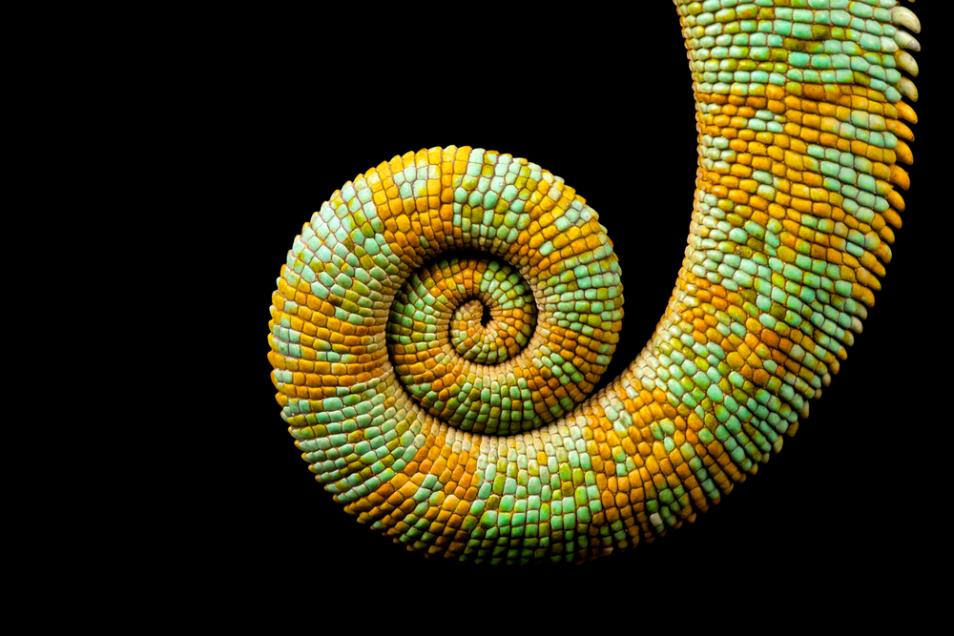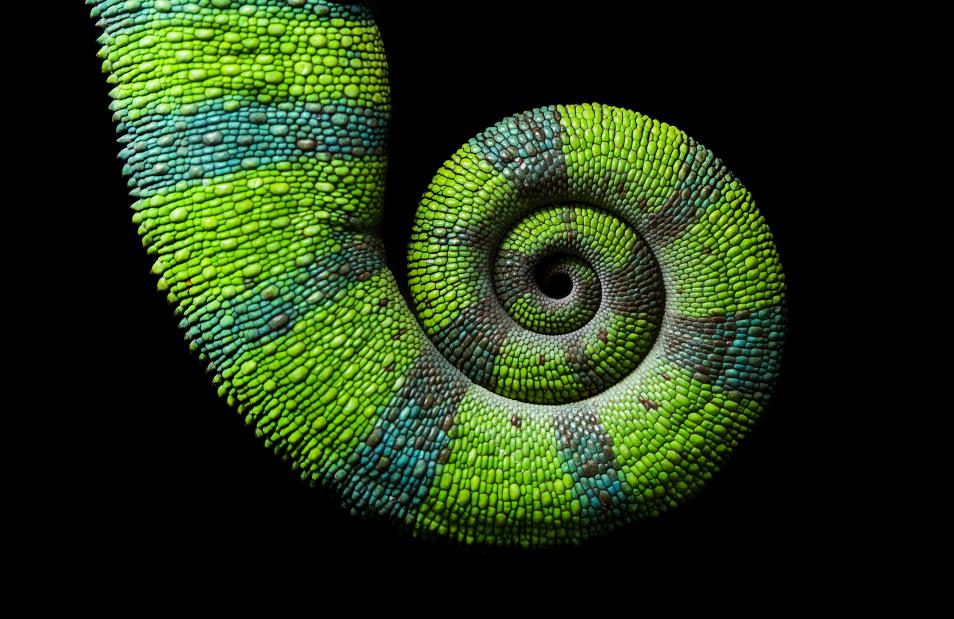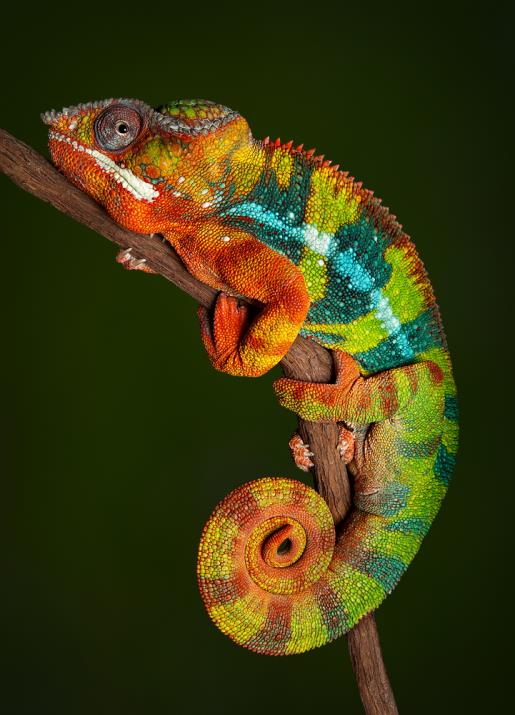Ammonite Shells and Chameleon Tails
The Logarithmic spiral is a beautiful and alluring shape that draws you in and is very pleasing to the eye.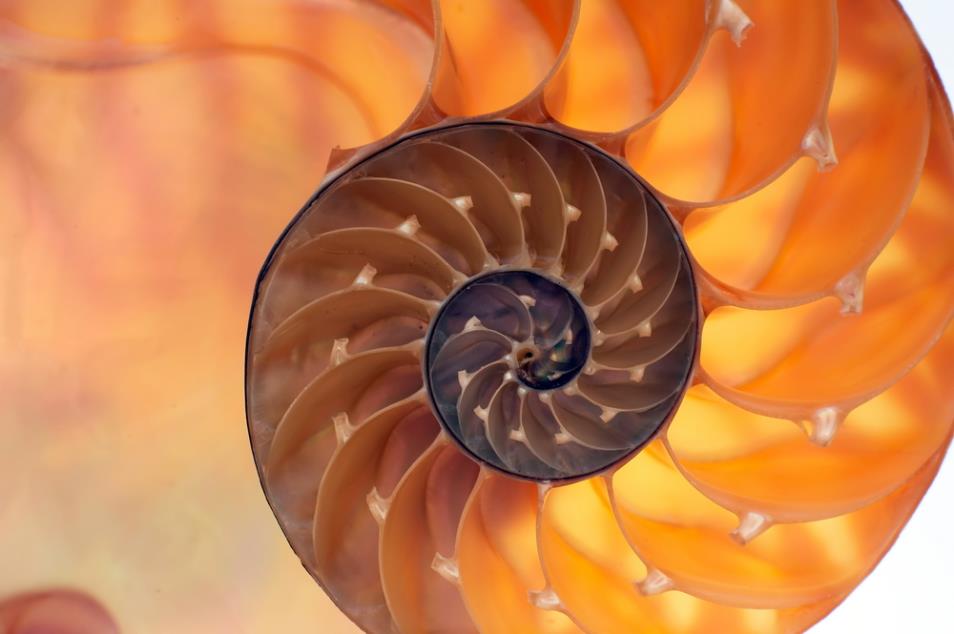
Christopher Wren observed that many Shells formed this spiral including the Nautilus shell which still swims Indo-Pacific waters today. The chambered Nautilus is a Cephalopod and a relative of ancient Ammonoids, it has an external shell and lives on the sea floor during the day and moving to shallower water at night to hunt for its prey. The Nautilus fossils we have for sale on our website www.madagascandirect.com were found in the jungles of Mahajanga on the north east coast of Madagascar. They are cretaceous 120 million years old, the shells have been replaced by beautiful calcites and have a gorgeous rich appearance. Spirals in plants and animals are often called 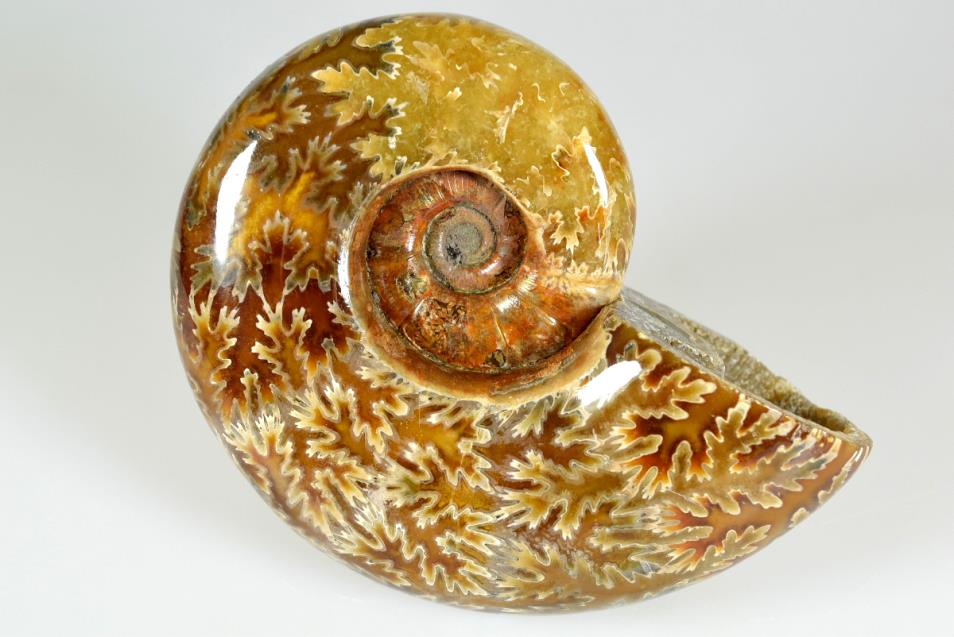 Whorls. The spiral falls into the magic golden ratio because its proportions are very aesthetically pleasing. Ancient greek mathematicians first studied what we call the golden ratio because of it's frequent appearance in geometry.
Whorls. The spiral falls into the magic golden ratio because its proportions are very aesthetically pleasing. Ancient greek mathematicians first studied what we call the golden ratio because of it's frequent appearance in geometry.
Well now onto the Chameleon tail, here are a few photographs of the chameleons of Madagascar which instinctively reminded me of the shape of ammonites and nautilus especially the Lytoceras ammonite. Chameleons can live in warm but very varied habitats from rain forests to deserts and almost half of the world's species of chameleons are native to Madagascar. Most chameleons can change colour from brown to green and back, but some can change into almost any colour, this is because they are born with special cells that have a colour or pigment in them and they lie under the chameleon's outer skin. These cells are called Chromatophores and can change colour in as little as 20 seconds. It is a popular misconception that chameleons change colour to blend in with their surroundings but scientists disagree, they think that light temperature and mood is more likely for the chameleon to change colour. Chameleons have a full 360 degree arc of vision and can rotate and focus separately to see 2 different objects simultaneously. Their tongues are also really amazing as they can ballistically project their long tongue from their mouth to capture prey from a long distance away. The tip of the tongue is a bulbous ball of muscle and when it hits it's prey it forms a small suction cup. Please enjoy the wonderful photographs of chameleon tails which so reminded me of the ammonite fossils of madagascar.
special cells that have a colour or pigment in them and they lie under the chameleon's outer skin. These cells are called Chromatophores and can change colour in as little as 20 seconds. It is a popular misconception that chameleons change colour to blend in with their surroundings but scientists disagree, they think that light temperature and mood is more likely for the chameleon to change colour. Chameleons have a full 360 degree arc of vision and can rotate and focus separately to see 2 different objects simultaneously. Their tongues are also really amazing as they can ballistically project their long tongue from their mouth to capture prey from a long distance away. The tip of the tongue is a bulbous ball of muscle and when it hits it's prey it forms a small suction cup. Please enjoy the wonderful photographs of chameleon tails which so reminded me of the ammonite fossils of madagascar.